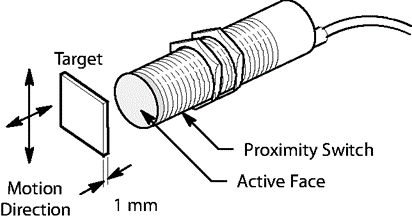
The PLC collects data from sensors or input devices, processes it, and activates outputs depending on pre-programmed settings. Guess it depends on the inputs and outputs a PLC may track and collect run-time data such as device productivity or working temperature, start and stop operations remotely, provide alarms if a device malfunctions, and much more. PLCs are a versatile and resilient control system that can tailor to practically any sensors, especially those that require no contact, like the magnetic proximity sensor.
NPN and PNP in PLC
NPN stands for Negatively Switched. The term “switched” refers to which side of the controlled load (relay, tiny indicator, PLC input) is electrical. Keep in mind that if you get them jumbled up, “N” stands for “Negative” and “P” stands for “Positive”. The Negative side of PNP sensors links to the common terminal. The Positive Side of an NPN sensor connects to the common.
Which is better, PNP or NPN?
Electrons have significantly greater mobility than holes. As a result, NPN transistors are chosen since they magnify the signals.
While PNP and NPN sensors perform the same fundamental function, you may be wondering why one would prefer them over the other. There are some distinctions, and NPN transistors favor in most circuit design applications. This is due to the fact that “N” substrates transit electrons far faster than “P” substrates carry positive electron holes. This provides a significant benefit in high-speed switching and amplifier circuit applications. In addition to this benefit, NPN transistors are simpler and consequently less expensive to produce than PNP transistors.
Specific circuits, however, benefit from PNP-type transistors and would be difficult, if not unattainable, to build without this second type of transistor. A class B amplifier is one such application in which a matched pair of PNP and NPN transistors operate in unison to amplify oscillating signals efficiently. It’s handy to have this second sort of switching option accessible when creating a circuit.
NPN transistors and PNP transistors are two types of transistors that are utilized for distinct purposes. NPN transistors are transistors in which the p-type is sandwiched between two n-types to amplify weak signals entering the base and producing powerful amplified signals at the collectors’ end. In a PNP transistor, the n-type material is sandwiched between two p-types to
form a current-controlling device.
In the instance of the PNP transistor, there are two p emitters, indicating that the bulk of the charge carriers are holes. However, when it comes to mobility, holes have relatively poor
mobility since compared to electrons. Hence p-transistors are used as a regulating device rather than an amplifying device.
PNP sensors are built on junction transistors, which are electrical circuits that switch and amplify electrical currents. A PNP transistor regulates the primary current flow by changing the number of holes in the base rather than the number of electrons. Transistors are one of the greatest innovations of the twentieth century due to their low cost, dependability, and compact size.
NPN is chosen over PNP because electrons have greater mobility than holes, resulting in greater energy mobility. On the other hand, PNP is something we see in the industrial world, such as when we have to choose a three-wire detector or photocell, especially when we create schematics and wiring.